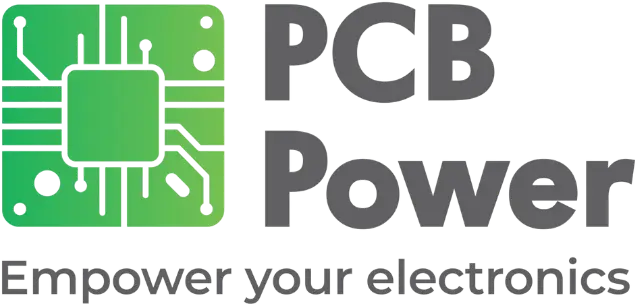
Manufacturers use two types of technologies to make components—Through Hole and Surface Mount—the latter being the latest. Through-hole components have leads that need to pass through the printed circuit board for soldering on the other side. This requires the PCB fabricator to drill holes for all the through-hole components mounted on the board, and this limits the board density, not allowing it go below a certain level.
Surface mount technology (SMT), on the other hand, does not use protruding leads. Rather, SMT components use end caps that solder on to pads on the PCB surface. As they do not need leads for mounting, manufacturers can reduce the physical size of SMT components, thereby increasing the packing density on the PCB. This results in a smaller board.
Therefore, design and fabrication processes such as the surface mount technology is fast replacing PCB components that mount through holes with direct placement on the printed circuit board surface. As SMT components and packages are largely standardized, designers can realize uniformity in component sizes. The JEDEC or Joint Electron Device Engineering Council specifies these standards, with an aim to simplify the development processes for companies manufacturing and utilizing SMT fabrication equipment, component manufacturers, and PCB designers.
Advantages with SMT Assembly
Modern electronic equipment use a huge number of printed circuit boards, a vast majority of which now utilize SMT components. Not only do these include televisions, smartphones, and computer boards, but also home appliances such as microwave ovens, laundry machines, and refrigerators.
Design complexity is increasing due to shrinking component packages and increasing functionality of equipment. Therefore, using SMT components on mass-produced PCBs requires designing the boards with highly sophisticated technical design tools such as CAD software and specialized PCB development programs.
With software products that interact with fabrication tools, design engineers have manufacturing abilities integrated into their initial design. Closely coupling the processes from design to fabrication reduces the iterations between the two processes, thereby speeding up time to market. This linking is often referred to as DFM or design for manufacturing.
As design with SMT components does not require holes for mounting them, a larger area of the board is available to the designer for routing traces that interconnect the components. It also allows designers to place components on both sides of the PCB, and have several inner layers for additional routing or using as shielding planes. The result is a compact multilayered PCB that is not only more robust, but also more reliable.
Although multilayered boards still require vias or plated-through holes for interconnecting traces between different layers, manufacturers can drill the holes using lasers, making the vias far smaller in diameter than those mechanical drill bits can make. Using SMT components avoids a lot of metal in the form of leads, making the PCB assembly a lot lighter. Elimination of excess metal and holes also implies reducing cost—in the form of cheaper SMT components and in significantly reduced operations for hole drilling. Furthermore, reduction in the PCB size also adds significantly to the cost reduction.
The small sizes of SMT components and their placement density does not allow manual handling. Automated fabrication processes are necessary, with programmed machines picking up the miniature components from reels or trays and using camera vision to place them precisely on the board.
Likewise, it is no longer possible to solder the PCB assembly manually with SMT components. Reflow machines now solder multiple boards at a time, mass-producing PCBs with very low failure rates.
Designing PCBs with SMT Components
Although designing PCBs with SMT components is very similar to designing them for through-hole components, the major difference lies in the topology. SMT components are physically far smaller in comparison to the through-hole types and do not require holes for mounting them, and therefore, it is possible to pack them closer together.
The smaller dimensions and ability to place them closer together means designers have to work with closer tolerances. Working with available CAD software for PCB design makes this task much simpler. In its simplest form, the package has two parts—one for drawing the schematic and the other, for routing the layout.
The designer starts the process by drawing a schematic with the help of the software package. The schematic is a pictorial representation of the various components the device uses, together with their interconnections. The software package usually has a library of common components from which the designer selects the ones necessary for the specific circuit. The software package also allows making additions to the library.
Apart from the pictorial representation or decal, the library also allows selecting the package of the component, as manufacturers offer the same component in many standard packages. As the designer makes the interconnections between different pins of the components, the software package keeps track in the form of a net list.
On completion of the schematic, the designer imports the net list into the layout and defines the boundaries of the PCB. The CAD software then proceeds to download the various packages from its library and connecting them according to the net list. Initially, the entire thing is a jumble, and the designer has the opportunity of auto-routing or manual routing.
The auto-router distributes the component packages in the most efficient way as seen by the computer, and proceeds to interconnect them with traces, in conformity with the net list.
However, this may not offer the best performance, and the designer has to intervene with manual routing. The designer is the best person to know the most effective layout for the components, as he has to take care of EMI/EMC issues, crosstalk, shielding, and more. Moreover, signal integrity may require laying some tracks in a special manner, and some layers added as ground or shielding.
Finally, the designer uses the CAD software package to generate the necessary documentation for sending to the fabricating agency for prototypes of the PCB.



